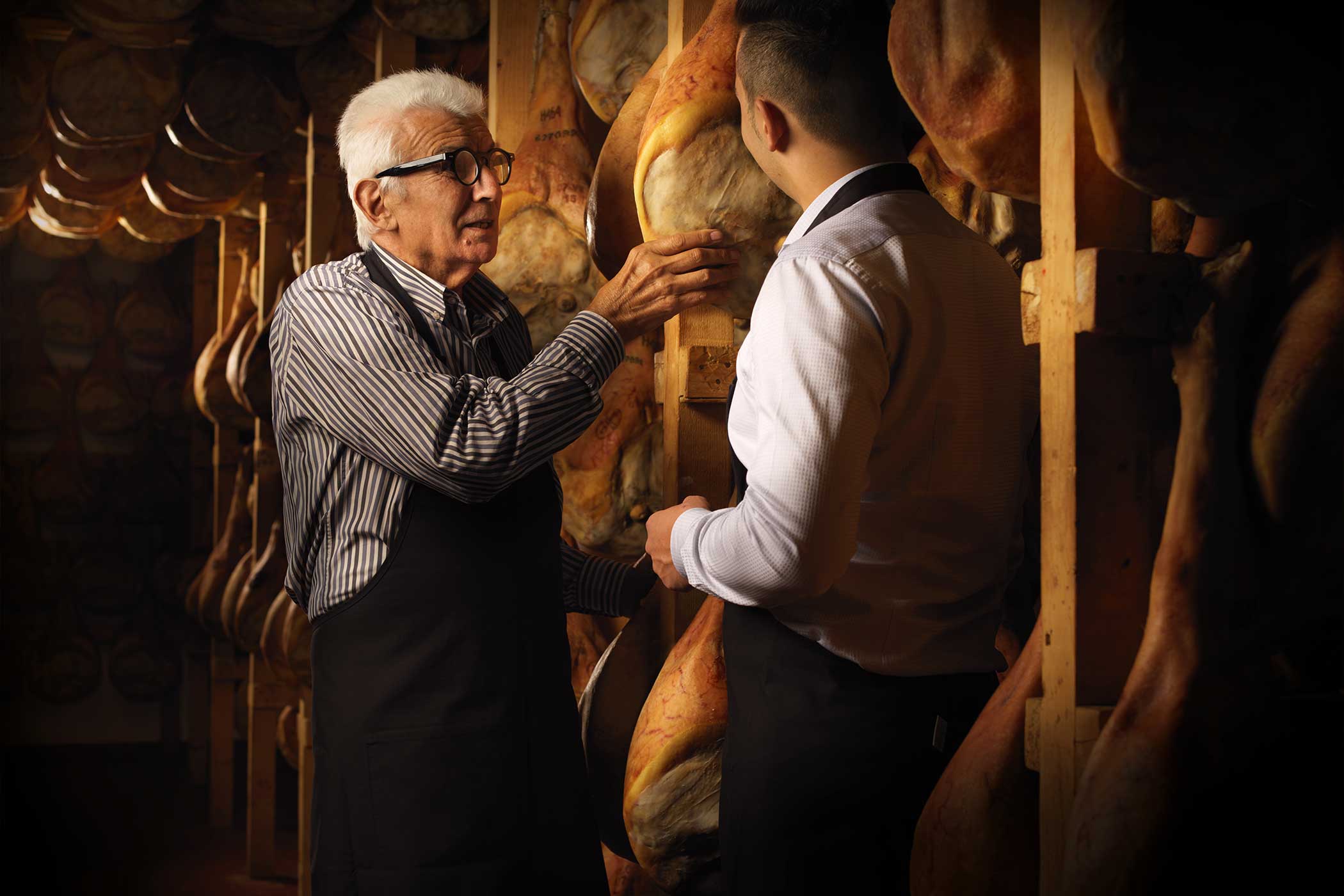The history of Prosciutto di San Daniele began long ago. We need to get back to pre-Roman times to trace the origins of this tradition, a taste and a know-how that persist to this day.
The origins: the Celts
The history of Prosciutto di San Daniele is closely linked with the one of its birthplace, Friuli-Venezia Giulia, a region in the North-East of Italy. Because of its geographical location, the Friulian territory has always served as a bridge linking the plains of Veneto and of the river Po Valley and the regions of Central and Eastern Europe. As a region full of history and as important crossroads of cultures, Friuli is a land that hosted various populations, from Celts to Romans, up to the Longobards.
The most ancient populations that inhabited the region were the Euganeans and the Rhaetians. These were replaced over the centuries by the Venetians followed by the Carni, of celtic origin.
The first evidence of pig farming dates from the 11th and the 8th B.C. At that time agriculture was mainly practiced in the region : trade was not very common, except as barter.
The Celts, who settled in the area around 600 B.C., changed the land use, building the first “hill-forts”, that is the fortified boroughs inside which the town was developed. They sprang up along rivers and streams, as these granted the water supply for humans, animals and crops.
What did the Celts eat? Breeding played a key role for the population: in addition to cattle, they used to breed pigs, for their meat that was used for banqueting.
The arrival of the Roman Empire
In 221 b.C. some Roman legions headed in Istria crossed the rivers Tagliamento and Isonzo: this was the first historically proven contact between Romans and the indigenous peoples of Friuli-Venezia Giulia. In 181 b.C. the Latin Colony of Aquileia was founded near the Adriatic sea and on the river Natisone, it was a major centre and one of the most important archaeological sites of Northern Italy.
The Romans influenced customs and traditions of the area, making agriculture and breeding more organized and productive.
Pork meat, a favourite in the diet of the Romans
As regards eating and breeding habits of ancient Italy and of the Roman Empire, the wealth of animal bone remains has enabled us to draw reliable information.
While sheep and goats weren’t raiesd to provide meat but for their derived products such as wool, milk and cheese, and cows were mostly used for pulling the plows and transportation(the slaughtering of beef was forbidden for a long time, because these animals were needed for the work in fields), pig breeding was very widespread.
Pigs were bred specifically for their meat, which was one of the most appreciated and consumed foods.
Most of the pigs were slaughtered at an early age, as confirmed by the osteological data. Moreover a growth in the dimension of the pigs over the years has been noticed, as evidence of the knowledge and application of the basics of the selecting processes to change the characteristics of animals.
The origins of a curing method based on the microclimate
The ancient Romans had already experienced that factors such as low humidity, ventilation and hilly piedmont climate allowed a better preservation of the meat.





